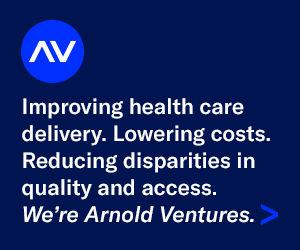
Are you fed up with the rigmarole some consumer publications put their freelance writers through? The endless rewrites, the comments about whether the “real person” in your story is “real” enough, or the battling for months to get the money you’ve long been owed?
Branching out into Business to Business (B2B) and Business to Consumer (B2C) publications can diversify your freelance writing career while connecting you with work that often doesn’t require pitching or even finding your own sources. Although these publications sometimes pay less than their consumer counterparts (though I find they often pay the same or more), cutting out some of those pain in the “you know what” factors mean they work out to a sky-high per hour rate, with a lot less frustration.
In my new ebook, Notes from a Hired Pen: How to Find New Freelance Writing Clients and Turbocharge Your Career, I write about how to find and retain these kinds of outlets (along with those at colleges and universities; and associations/foundations/societies). B2B and B2C work made up about 30% of my business in 2020. They also added a lot of interesting work without all the same layers of stress to my writing life.
Identify potential B2B targets
To find your place in the B2B realm, look at your interests and your hobbies. Then ask: “What do the people who work in this area read?”
For example, if you write about dermatology, what do dermatologists read? Dermatology Times and Practical Dermatology are a good start, as are sections that cover dermatology at clinician-focused publications like MedPage Today and Medscape, and melanoma at CURE.
You can look for publications that cover topics branching out from health or a slant on a piece you’ve already written. If you wrote about patients having trouble with insurance coverage for new classes of eczema drugs, consider Modern Healthcare or Healthcare Dive.
Freelancers can also join the American Society of Business Publication Editors for free to learn more about B2B publications. The group has a Member Directory and a list of finalists for their annual awards, which I read through every year to learn about other publications.
Identify potential B2C targets
You probably already know of at least one B2C publication. After all, the airline magazine in your seatback pocket is one, and Costco Connection is always an in-demand meeting at AHCJ’s PitchFest. But the B2C market is much broader than travel or box store-related magazines and includes health-related companies looking for engaging content to attract and/or retain customers.
Dupixent, an eczema medication made by Regeneron, has a Patient Stories section on their website. Kailos, a genetics company that makes cancer screening tests, including for melanoma, has a robust news section, with press releases, on their website.
And that’s just the start. There’s dermatology associations and their publications, medical schools that bring attention to their faculty’s dermatology research through their publications, and cancer associations that feature work being done in dermatology cancers, which may also include patient success stories.
I’m not saying all these groups and companies hire freelancers or that they pay well or treat their writers with the respect we deserve. But they are examples of how one kernel of interest can spin into endless possibilities.
Clear your conflicts
If you’re being paid by a brand, you can’t write about the brand in your journalistic work, especially if you write for newspapers with strict ethica policies. If you are writing patient success stories about Dupixent, you may not want to do a deep dive into the finances of Regeneron, even if you are being paid by a content agency for the writing.
To keep conflicts clear, I silo my work. When I helmed the running newsletter for the New York Times, I never wrote for any company even remotely related to running. But I did write press releases for a cardiology practice in Utah and feature stories about groundbreaking research happening at a cancer research institution for their annual magazine. I was OK doing that because I never wrote about those topics or included those organizations in my consumer publication work.
When in doubt, ask your editor. They may not think it’s a big deal if you include a researcher from a big state school, even if you wrote a profile of an art teacher for that school’s alumni magazine. It’s better to ask in advance to avoid any trouble down the road.
Send a letter of introduction, follow up twice
Because editors in this space often know what they want to assign (or had topics given to them by their parent institution), you don’t always have to pitch. Instead, I approach B2B and B2C publications with a letter of introduction, which is an email these days. (When I started, it was a mailed letter, imagine!) It’s short, sweet and to the point: this is who I am, here’s who I write for, here are some clips, thanks and I hope to work with you soon.
I keep track of these outreaches on an Excel spreadsheet. I’ll follow up about two months after the initial email, and then again six months or so after that (and I do this while watching Marvel or Disney movies because it can be tedious work). The fastest I got an assignment: a few hours. The longest? Two years.
You’re not bothering these editors when you reach out. If they are looking for a writer to match for a project, you may be an angel descending out of the internet to solve a problem for them. And best of all? They’ll pay you for it.
Jen A. Miller (jenamiller.com) is an award winning freelance writer and author. She has written for The Washington Post, The New York Times, The Outline, The Guardian, SELF, Buzzfeed, The Goods, and the Philadelphia Inquirer, among others. She is also a regulator contributor to Clinical Laboratory News, HealthTech and several alumni magazines.




